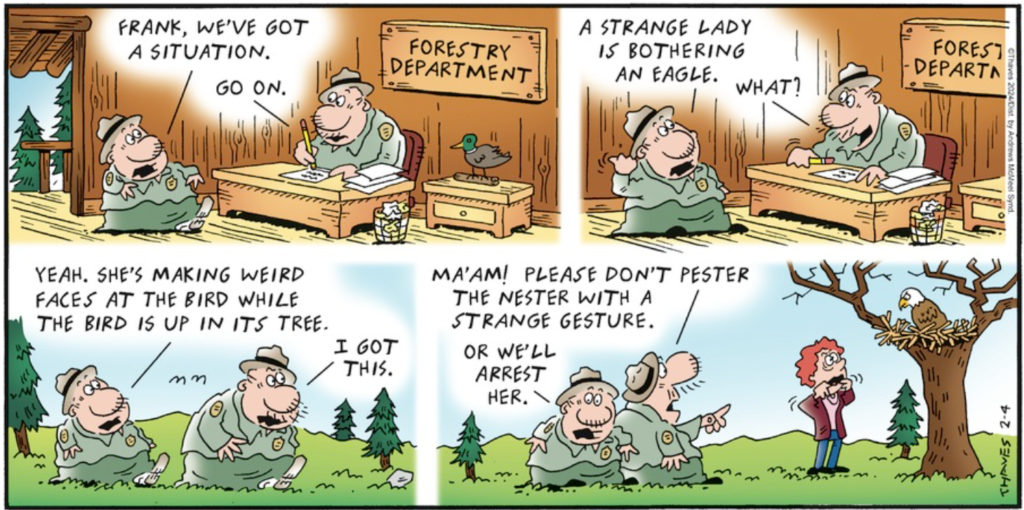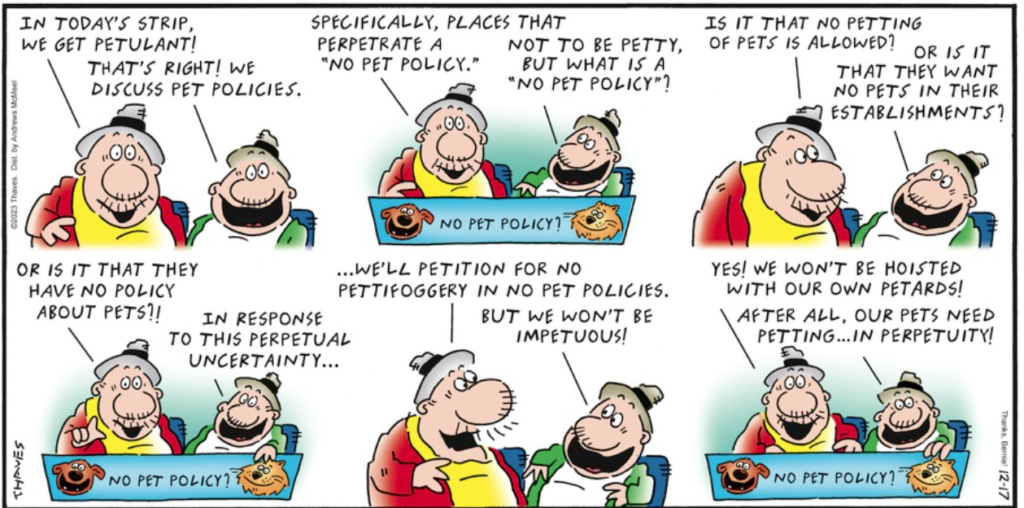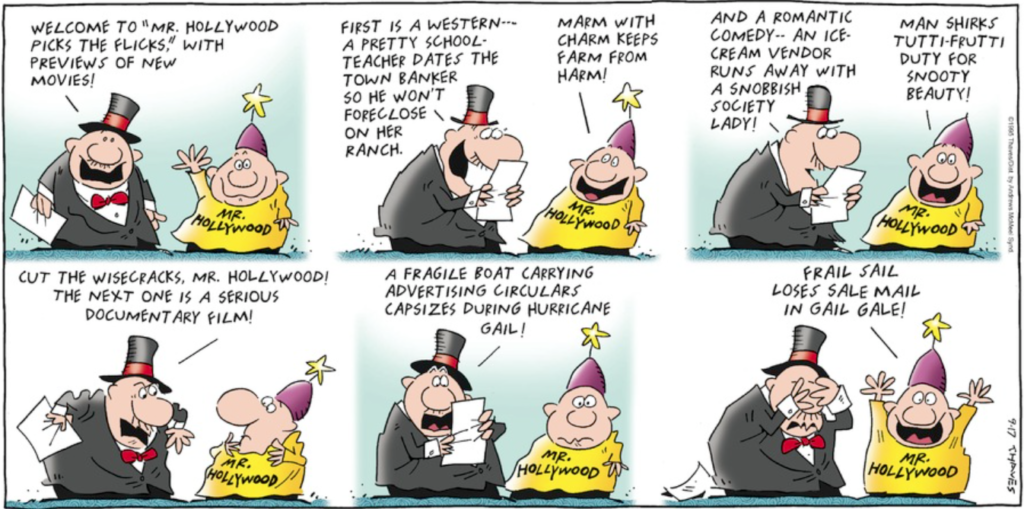A List of Homophones
Homophones are two (or more) words that have different meanings and different spellings, but the same pronounciation. The cartoonist did a nice job of mentioning several three-way homophones!
Subscribe to this blog's RSS feed
An Impressive Hyperbole
“Hyperbole” is the technical term for literary exaggeration, such as saying “huge” when “big” will do. Normally this figure of speech is one word, but you can use more than one word if you like:
I like the pun at the end. “Thesaurus” does rather sound like a dinosaur name.
An Example of Slant Rhyme
Last panel:
“gesture” almost fits, so it qualifies as slant rhyme.
A Good Example of why Hyphens are Important
One function of hyphens is to tie two words together into what we call a compound adjective. The difference in which word (or words) another word modifies can be significant. Lots of humor in this strip, but read the label on the sign.
Now look at the first panel in the bottom row. He reads the sign correctly! Without the hyphen, “no” modifies “pet policy.” If you have a policy that forbids pets, you have to say “no-pet policy.”
PS—I just ran into this. Same lesson, only about the space between words. I found it on Facebook

Not a Lesson, but Good for a Few Language Laughs
The guy who writes Frank and Ernest, Bob Thaves, is good at creating puns, which these are. And they rhyme.
I’ve posted some of his work before; do a search on frank and ernest in the search box on the right.





